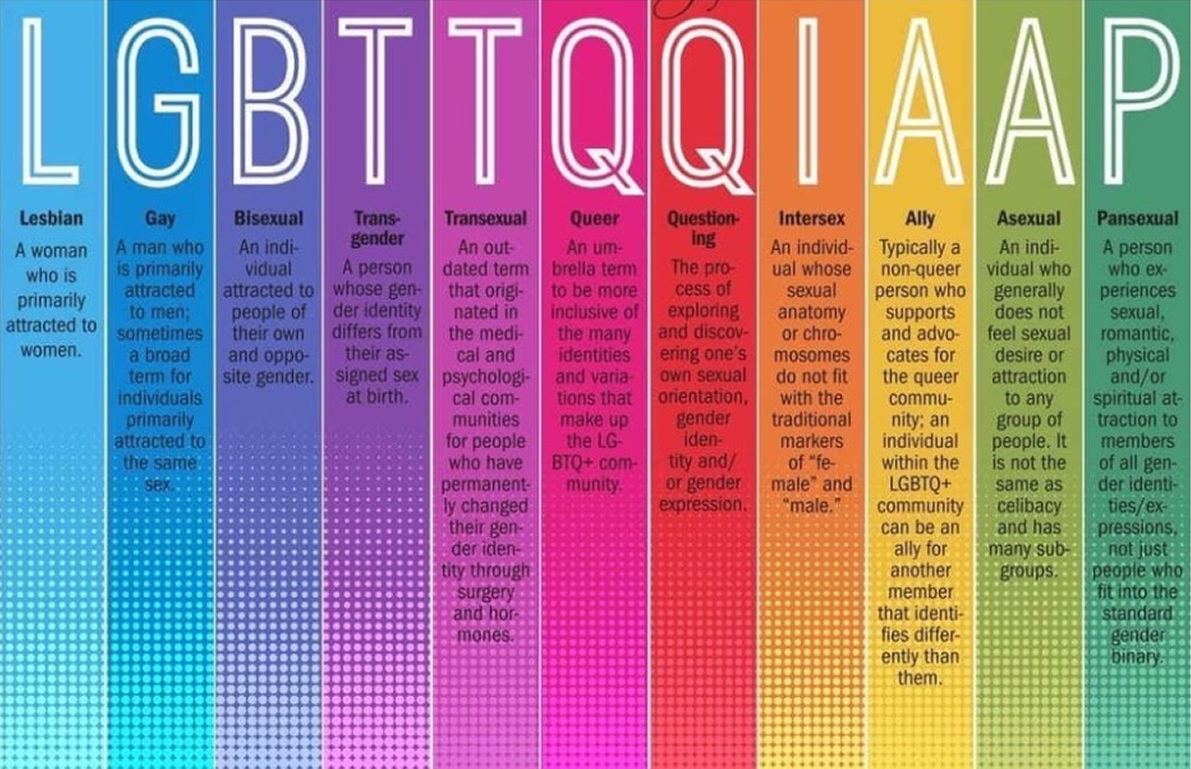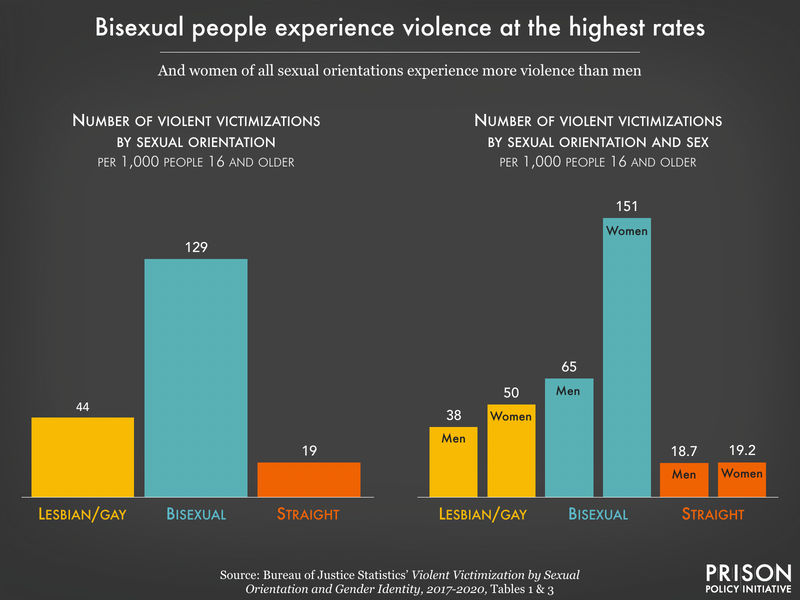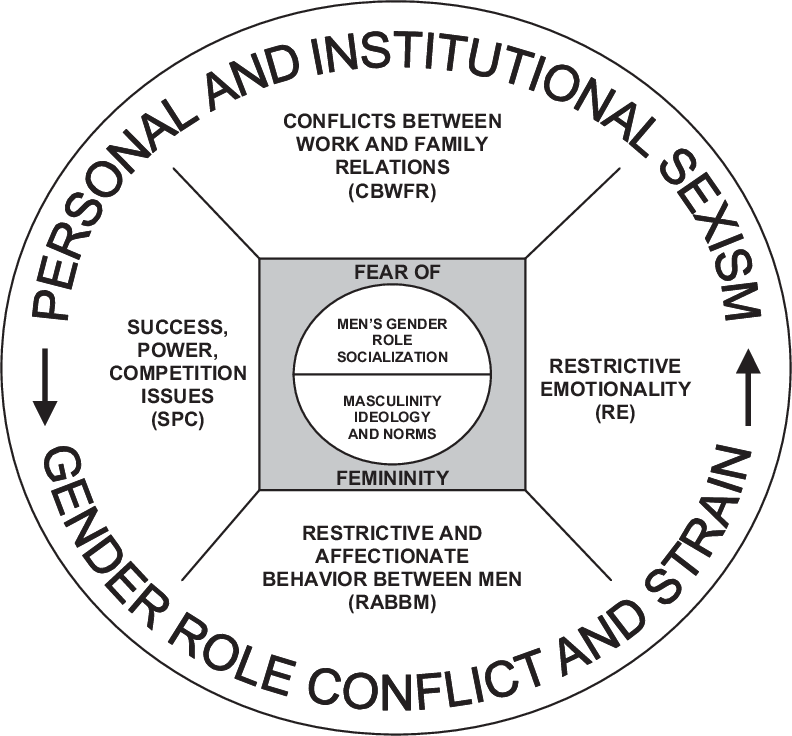Introduction
In today’s society, individuals vary in terms of sexual orientation, and it is essential to approach these differences with acceptance and understanding. While heterosexuality has traditionally been the dominant sexual orientation, many individuals identify as lesbian, gay, bisexual, or transgender (LGBT).
Research indicates that between 2% and 8% of the population in the United States self-identifies as gay, lesbian, or bisexual, though this number may be underestimated due to individuals choosing not to disclose their sexual orientation (Graham, Carney & Kluck, 2012; Centers for Disease Control and Prevention, National Center for Health Statistics, 2011).

LGBTQIA+
This variation in sexual identity has profound implications for counseling and the importance of creating supportive environments for those who may face challenges related to their sexual orientation.
Challenges Faced by LGBT Individuals
The challenges faced by LGBT individuals begin early in life and are often compounded by the discrimination, stigma, and hostility they may encounter throughout their lives (Savage, Harley, & Nowak, 2005).
- Common stereotypes include harmful misconceptions that individuals from sexual minorities are more likely to engage in inappropriate behaviors, such as child molestation, or that same-sex relationships are inherently unstable (Chen-Hayes, 1997).
- These stereotypes contribute to social isolation, lack of access to resources, and discrimination, which can further lead to internalized stress, known as minority stress (Graham et al., 2012).
- The psychological and emotional toll of this stress can lead to significant mental health struggles, including depression, anxiety, and suicidal thoughts.
It is crucial to recognize that LGBT individuals come from diverse backgrounds, and their experiences may vary widely. Research shows that lesbian, gay, and bisexual individuals represent all age categories, racial groups, and cultural backgrounds (Degges-White & Shoffner, 2002). However, bisexuals and transgender individuals have been less well-studied, and the challenges they face in society are often less understood. The growing visibility of transgender individuals in mainstream media, such as the popular TV series Transparent and the public transition of Caitlyn Jenner, has helped increase awareness and understanding of the complexities of transgender lives (Budge, Orovecz, & Thai, 2015).
Stereotypes and Discrimination
Stereotypes about sexual minorities often shape public opinion and contribute to the devaluation of LGBT individuals. These harmful stereotypes, when internalized, can lead to diminished self-esteem and mental health issues for LGBT individuals (Dermer, Smith, & Barto, 2010). Furthermore, discrimination based on sexual orientation can result in a lack of opportunities and an exacerbation of psychological distress. Historically, even professional counselors have held negative attitudes toward LGBT individuals, which complicates the process of providing effective care and support (Matthews, 2005).

Violence Against LGBTQ+ Individuals (Prison Policy Initiative)
Professional organizations, such as the Association for Lesbian, Gay, Bisexual, and Transgender Issues in Counseling (ALGBTIC), work to dispel myths surrounding sexual minorities and promote accurate, research-based information. It is crucial for counselors to be well-informed and mindful of their own biases when working with individuals from sexual minority groups. A lack of knowledge and acceptance of these populations can lead to inappropriate counseling practices and a failure to provide the support that clients need.
Counseling LGBT Individuals
Lesbian, gay, bisexual, and transgender individuals often seek counseling services at higher rates than their heterosexual counterparts, indicating that they may be more likely to experience mental health challenges (Graham et al., 2012). Many of the challenges faced by LGBT individuals are similar to those of their heterosexual peers. For example, issues related to relationships, physical and mental health, career decision-making, and aging are common concerns (Erwin, 2006). However, there are also unique issues related specifically to sexual orientation that can surface in the counseling relationship.
Coming Out
- One of the most significant issues is the process of coming out, where individuals disclose their sexual orientation to others. This process is developmental and often involves self-exploration, acceptance, and emotional adjustment (Barret & Logan, 2002; Bieschke, Perez, & DeBord, 2007).
- Coming out can be a deeply transformative process, leading to a sense of relief, personal integrity, and authenticity. However, it can also raise feelings of fear, anxiety, and anger, particularly if the individual faces rejection or disapproval from family members, friends, or society at large.
- Counselors can support clients by helping them navigate these emotions, offering a safe and affirming space for exploration, and using therapeutic techniques such as cognitive restructuring to address self-talk and emotional distress (Martell, Safren, & Prince, 2004).

Client Centred Program for Intersex Individuals
Homophobia
- Another significant issue faced by LGBT individuals is internalized homophobia, which can manifest in feelings of guilt, shame, and self-hatred.
- This is especially common among gay men, who may also struggle with the loss of friends and loved ones due to the AIDS epidemic (Granello, 2004; Moursund & Kenny, 2002).
- Bereavement counseling and trauma-informed care can be essential for individuals coping with the loss of significant others due to AIDS, as these individuals may be at greater risk for developing depression, anxiety, or posttraumatic stress disorder (PTSD).
In working with gay, lesbian, and bisexual clients, some researchers advocate for the use of a social empowerment model (SEM), which aims to increase clients’ self-advocacy and recognition of their own resilience (Savage et al., 2005). The SEM emphasizes that sexual orientation is not a pathology and focuses on addressing concerns rather than attempting to change sexual orientation. This approach is particularly important for individuals who may feel stigmatized or marginalized, as it fosters a sense of self-worth and agency.
Read More- Counselling for Individuals with HIV/AIDS
What is Queer Affirmative Counseling?
Queer affirmative counseling (QAC) is a therapeutic approach designed to create a safe and inclusive space for individuals who identify as LGBTQ. Unlike traditional counseling approaches that may focus on pathologizing sexual or gender identities, queer affirmative counseling emphasizes the importance of affirming these identities and celebrating the diversity of sexual and gender expression.
QAC challenges heteronormative assumptions, which often treat heterosexuality as the default sexual orientation and maleness/femaleness as the standard for gender identity. It instead recognizes the fluidity of sexuality and the complexity of gender, fostering a therapeutic environment where individuals feel seen, heard, and respected regardless of their sexual orientation or gender identity. In queer affirmative counseling, the therapist works to deconstruct societal and cultural barriers that perpetuate stigma and discrimination, while helping clients develop healthier self-concepts and resilience.
A central aspect of QAC is empowerment. Rather than focusing on changing the client’s sexual orientation or gender identity, this approach emphasizes the importance of helping the client gain agency, improve self-esteem, and develop coping strategies to deal with external challenges such as prejudice and discrimination. As such, QAC helps individuals reclaim their autonomy and resist societal pressures that attempt to marginalize or diminish their experiences (Nystrom, 2013).
Key Principles of Queer Affirmative Counseling
Some key principles of queer affirmative counseling include-
- Sexual and Gender Diversity is Normal- Queer affirmative counseling promotes the idea that diversity in sexual and gender identity is not pathological. It challenges heteronormative perspectives and emphasizes that everyone’s sexual orientation and gender identity exist on a spectrum. Counselors who practice QAC view these identities as natural expressions of human diversity.
- Affirmation and Validation- The therapist plays an active role in affirming the client’s sexual or gender identity. Validation is key to fostering trust and creating a therapeutic space where individuals can explore and express themselves without fear of judgment. Counselors who use QAC approaches avoid pathologizing behaviors and instead support the client’s self-expression.
- Empowerment- QAC is centered on empowering clients by providing them with the tools, resources, and support needed to navigate the challenges they may face as a result of their sexual orientation or gender identity. Counselors work to build clients’ self-worth, confidence, and resilience, helping them to advocate for themselves in challenging environments.
- Addressing Minority Stress- One of the key objectives of queer affirmative counseling is to help clients recognize and manage the negative impact of minority stress. This includes helping clients process experiences of discrimination, rejection, or trauma, while promoting positive coping mechanisms to deal with these external pressures. Additionally, QAC encourages clients to embrace their identities in the face of societal rejection or marginalization.
- Client-Centered Approach- Like other forms of counseling, QAC is grounded in the principles of client-centered therapy. The therapist creates a safe, empathetic, and nonjudgmental environment where the client feels supported. The therapist actively listens to the client’s experiences, without assuming or imposing labels, and works collaboratively with the client to address their specific concerns.
Working with Transgender Individuals
Transgender individuals face a unique set of challenges related to gender identity, which often intersect with issues of sexual orientation. For counselors working with transgender clients, it is essential to understand the complex social, medical, and psychological challenges that these individuals face (Moundas et al., 2009). Gender identity is distinct from sexual orientation, and it is important to provide personalized care that respects the individual’s experiences and needs.
One helpful framework for counseling transgender clients is the Gender Role Conflict (GRC) model (Wester et al., 2010). This model addresses the psychological distress that arises when individuals feel constrained by societal expectations related to gender roles. In counseling, GRC theory can help clients explore the limitations imposed by traditional gender norms and support them in developing their own, self-defined gender identities. By focusing on the situational constraints placed on individuals, counselors can assist clients in navigating gender-related stressors and developing coping strategies.

Gender Role Conflict (APA)
Despite the challenges they face, transgender individuals often demonstrate remarkable resilience. Research has identified several key themes of resilience among transgender individuals, including the development of a self-generated definition of self, embracing self-worth, and cultivating hope for the future (Singh, Hays, & Watson, 2011). These themes highlight the importance of fostering personal empowerment and community support for transgender clients, and they offer valuable insights for counselors working with other marginalized groups as well.
Conclusion
Counseling individuals from sexual minority groups, including lesbians, gay men, bisexuals, and transgender individuals, requires cultural competence, empathy, and an understanding of the unique challenges these populations face.
Counselors must be aware of the societal and internalized stigmas that often accompany sexual minority identities and work to provide affirming, supportive care that promotes self-acceptance and personal growth.
By embracing inclusive practices and frameworks such as the social empowerment model and the gender role conflict model, counselors can help clients navigate the complexities of their sexual and gender identities while also fostering resilience and hope for the future.
Furthermore, ongoing education and advocacy are essential to dismantling harmful stereotypes and promoting a more inclusive and supportive society for all individuals, regardless of their sexual orientation or gender identity.
References
Barret, B. J., & Logan, M. C. (2002). Lesbian identity development: An exploration of sexual orientation and personal growth. Journal of Counseling & Development, 80(1), 24-32.
Bieschke, K. J., Perez, M. D., & DeBord, K. A. (2007). Counseling and psychotherapy with lesbian, gay, and bisexual clients. American Psychological Association.
Carroll, L., Gilroy, P. J., & Ryan, C. (2002). Counseling lesbians, gays, and bisexuals. American Counseling Association.
Centers for Disease Control and Prevention, National Center for Health Statistics. (2011). National Health Interview Survey, 2011.
Chen-Hayes, S. F. (1997). Myths and stereotypes: Understanding sexual orientation. The School Counselor, 44(1), 23-29.
Dermer, S. B., Smith, L. M., & Barto, J. D. (2010). Minority stress: The impact of discrimination and stigma on mental health outcomes. Psychology of Women Quarterly, 34(3), 327-340.
Degges-White, S., & Shoffner, M. (2002). Counseling gay, lesbian, and bisexual adolescents. The Journal of Humanistic Counseling, Education and Development, 41(1), 17-28.
Erwin, D. G. (2006). Lesbian issues and concerns: An analysis of the Lesbian Connection’s discussion forum. Journal of Lesbian Studies, 10(3), 89-103.
Granello, D. H. (2004). The stigma of mental illness among gay men: A social constructionist perspective. Journal of Gay & Lesbian Social Services, 16(3), 45-59.
Graham, J. R., Carney, M. M., & Kluck, A. S. (2012). The role of counselors in working with lesbian, gay, bisexual, and transgender clients. Journal of Counseling & Development, 90(3), 319-325.
House, R. M., & Miller, R. P. (1997). The “coming out” process: Implications for counseling gay and lesbian clients. Journal of Counseling & Development, 75(4), 155-161.
Matthews, R. (2005). Lesbian, gay, bisexual, and transgender counseling and the challenge of professional identity. Journal of Counseling & Development, 83(2), 241-249.
Moursund, D., & Kenny, M. (2002). Gay men and loss: Understanding the complexities of mourning and grief. Journal of Gay & Lesbian Social Services, 14(1), 5-22.
Savage, M. N., Harley, S., & Nowak, R. (2005). Empowerment-based counseling with lesbian and gay individuals: Implications for practice. Journal of Counseling & Development, 83(2), 126-135.
Singh, A. A., Hays, D. G., & Watson, L. B. (2011). Resilience in transgender individuals: The role of social support and self-acceptance. Journal of Counseling Psychology, 58(1), 20-25.
Wester, S. R., McDonough, M., White, B. T., Vogel, D. L., & Taylor, J. M. (2010). Gender role conflict in men’s lives: A contextual framework for understanding the emotional lives of men. Psychology of Men & Masculinity, 11(3), 197-205.
Subscribe to Careershodh
Get the latest updates and insights.
Join 16,504 other subscribers!
Niwlikar, B. A. (2025, January 15). Sexual Orientation and 5 Important Principles of Queer Affirmative Counselling. Careershodh. https://www.careershodh.com/sexual-orientation/
